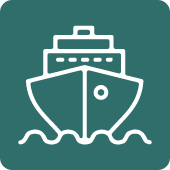
The development of energy storage technologies and devices remains the cornerstone of a fully electrified transport system integrated in a clean energy network. Decreasing battery costs while increasing their energy density and lifetime will speed up electrification of road transport.
The deployment of a network of recharging points covering the whole European Union road network is another key enabling condition for transport electrification.
The Strategic Transport Research and Innovation Agenda (STRIA) Roadmap for Transport electrification aims to bring forward the developments carried out in the framework of the European Green Vehicles Initiative and encourage multi-sectorial and multi-disciplinary research and innovation activities on new materials, advanced propulsion systems and information and communication technology.
The Roadmap sets out key priority research and innovation (R&I) actions for electric mobility in each transport mode until 2050. The scope of the activities in the area of transport electrification takes into account both advanced power-train technologies and new vehicle architectures, weight reduction, improved aerodynamics and rolling resistance and component development for alternative fuel vehicles.
The following table highlights identified key R&I actions until 2050.
- Promote a 400+ kilometres range for electric passenger cars
- Development of small and light smart electric vehicles
- Progress and demonstration in urban bus electrification
- Public and commercial procurement of electric vehicles
- Certification of electric vehicle performance
- Develop electro-chemical systems for future high-density electric batteries
- Support local production of batteries, components and electric vehicles
- Demonstration of electrified road systems for heavy duty vehicles
- Electrification of secondary network to increase utilisation of electric motorisation
- Development of new motorisation
- Intensify electric freight rail transportation
- Develop intermodal hubs in cities
- Develop light vehicles
- Minimise the losses of electric railway infrastructure through smart power grids for rail
- Increase energy savings towards minimising fossil energy utilisation
- Regulation to harmonise energy characteristics for rails in the EU
- Raise public awareness of benefits of electrified vessel
- Deploy new materials and technologies
- Innovative financing tools
- Support education and training
- Research and development with focus on materials
- New business models
- Improvement of energy storage systems
- Achieve maturity in High Temperature Superconductors
- Electric aircraft design
- Airport electrification by electrified support vehicles and charging infrastructure deployment
- Develop skills and competences for a specialised interdisciplinary work force
- Regulation towards decreasing cost and increasing product development speed
Data at-a-glance
TRIMIS Data at-a-glance presents the main transport research and innovation indicators based on TRIMIS data. Find out more about the geographical distribution of European Union transport research and innovation funding, discover the organisations involved in transport research activities and the evolution of funding. Discover the TRIMIS overview for overall data and the seven STRIA Roadmaps.
Further details are available in the full TRIMIS Dashboard.





